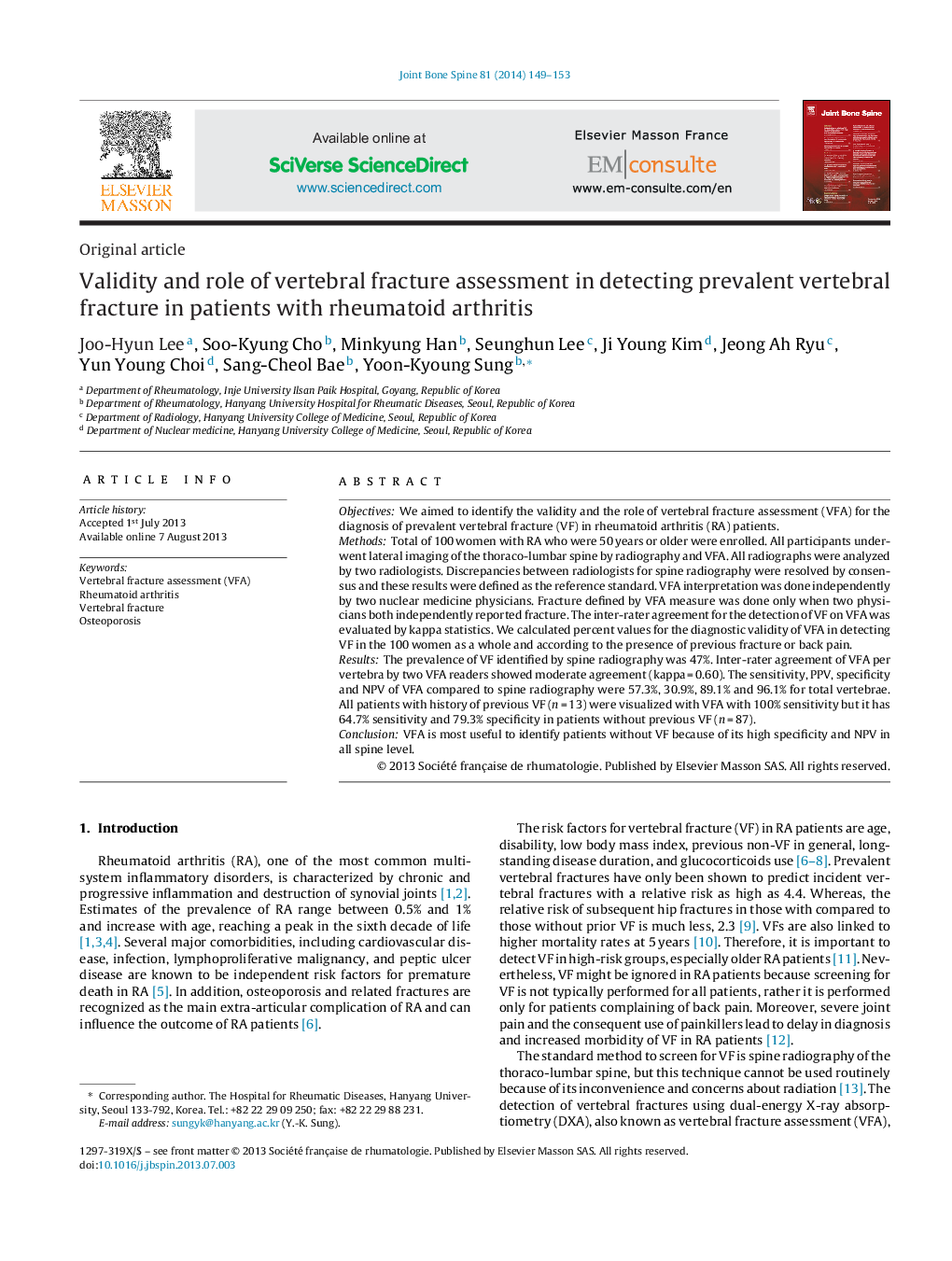| Article ID | Journal | Published Year | Pages | File Type |
|---|---|---|---|---|
| 3365823 | Joint Bone Spine | 2014 | 5 Pages |
ObjectivesWe aimed to identify the validity and the role of vertebral fracture assessment (VFA) for the diagnosis of prevalent vertebral fracture (VF) in rheumatoid arthritis (RA) patients.MethodsTotal of 100 women with RA who were 50 years or older were enrolled. All participants underwent lateral imaging of the thoraco-lumbar spine by radiography and VFA. All radiographs were analyzed by two radiologists. Discrepancies between radiologists for spine radiography were resolved by consensus and these results were defined as the reference standard. VFA interpretation was done independently by two nuclear medicine physicians. Fracture defined by VFA measure was done only when two physicians both independently reported fracture. The inter-rater agreement for the detection of VF on VFA was evaluated by kappa statistics. We calculated percent values for the diagnostic validity of VFA in detecting VF in the 100 women as a whole and according to the presence of previous fracture or back pain.ResultsThe prevalence of VF identified by spine radiography was 47%. Inter-rater agreement of VFA per vertebra by two VFA readers showed moderate agreement (kappa = 0.60). The sensitivity, PPV, specificity and NPV of VFA compared to spine radiography were 57.3%, 30.9%, 89.1% and 96.1% for total vertebrae. All patients with history of previous VF (n = 13) were visualized with VFA with 100% sensitivity but it has 64.7% sensitivity and 79.3% specificity in patients without previous VF (n = 87).ConclusionVFA is most useful to identify patients without VF because of its high specificity and NPV in all spine level.
